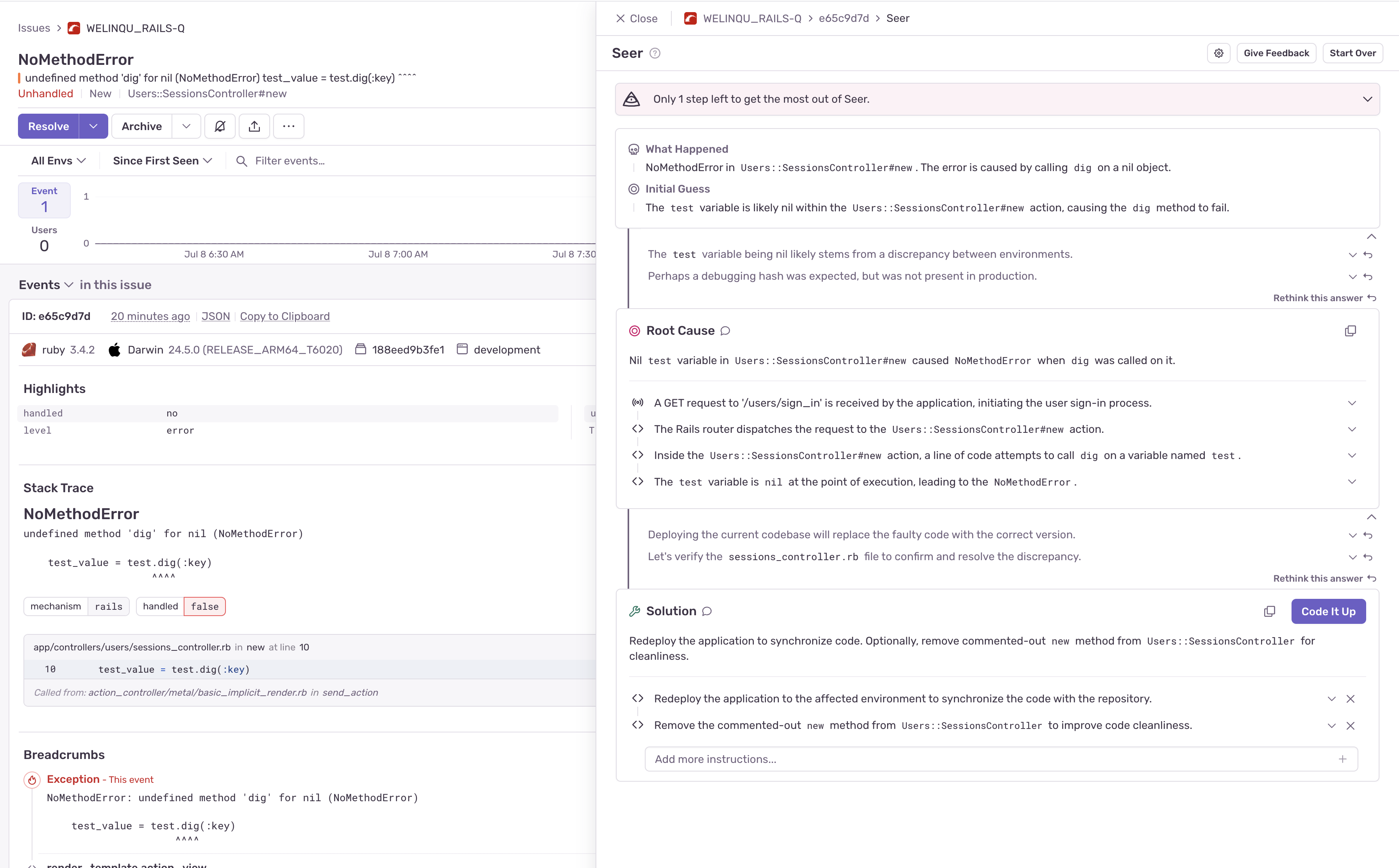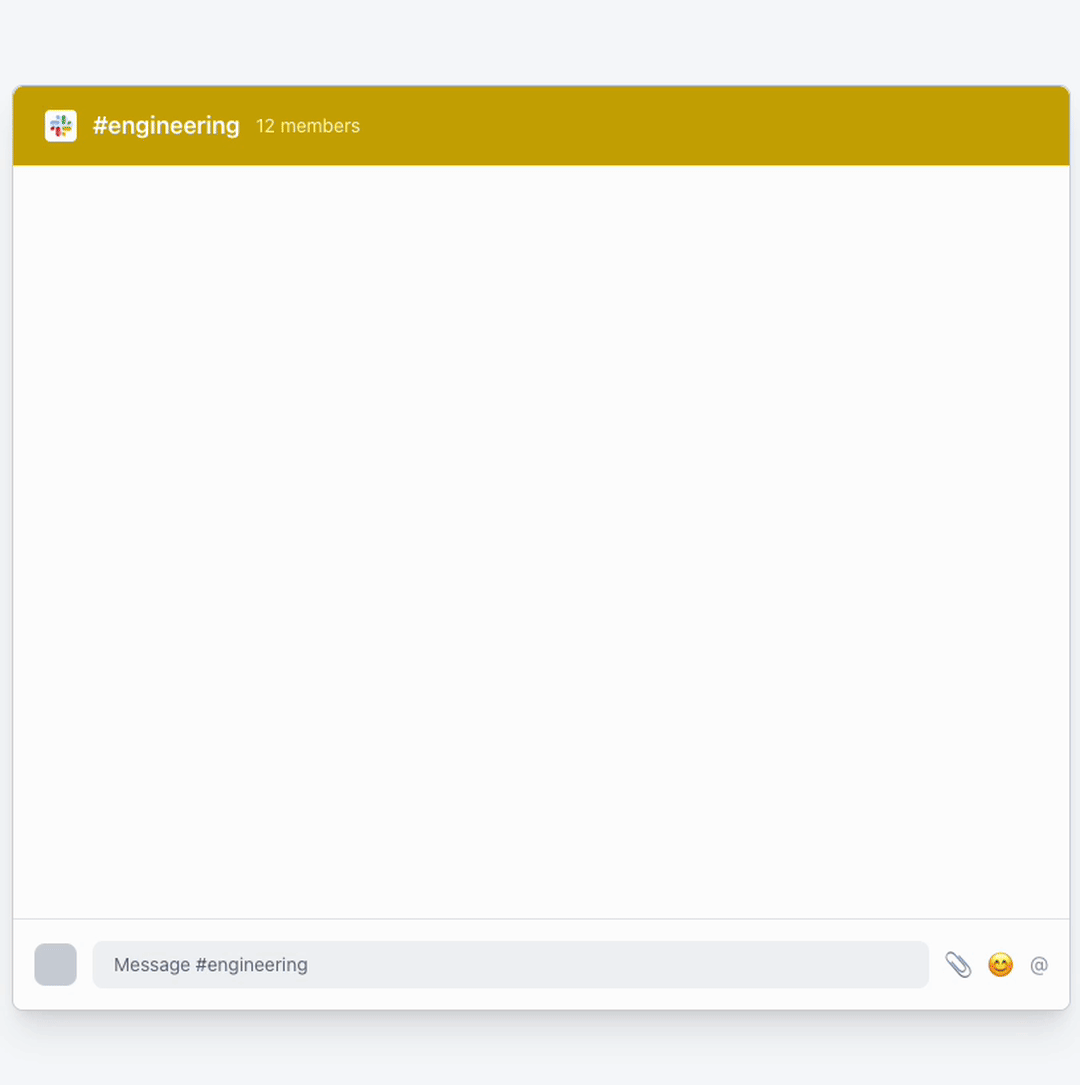Picture this: It's 2 AM, your phone buzzes with alerts, and your app is down. Users are flooding your support channels, your boss is asking for updates, and you're staring at a sea of error messages, logs, and stack traces trying to figure out what went wrong. Sound familiar?
This nightmare scenario is exactly what two innovative AI-powered tools are trying to solve: Sentry's Seer and Uptime Agent. Both promise to transform how we handle incidents, but they take very different approaches to get there.
The Problem We're All Facing
Before diving into the solutions, let's acknowledge the pain point every developer knows too well. When something breaks in production, the real challenge isn't just knowing that something's wrong - it's the detective work that follows. You jump between GitHub commits, error tracking tools, monitoring dashboards, and log files, trying to piece together the story of what actually happened.
This investigation gap between "something's broken" and "here's how to fix it" can eat up 45-90 minutes of valuable time. In today's fast-paced development world, that's simply too long.
Sentry Seer: The Deep-Dive Detective
Sentry's Seer takes the approach of being your AI debugging companion that knows your codebase inside and out. Powered by Anthropic's Claude, Seer operates within the Sentry ecosystem to provide what they call "context-rich debugging."
What Seer Brings to the Table
Comprehensive Context Analysis: Seer doesn't just look at error messages. It analyzes stack traces, commit history, logs, traces, spans, profiles, and your actual codebase to understand what broke and why. According to Sentry, it achieves 95% accuracy in root cause identification.
Automatic Fix Generation: Here's where Seer gets interesting - it doesn't just tell you what's wrong, it actually writes code fixes and can open pull requests automatically. Sentry reports that Seer provides merge-ready fixes over 60% of the time.
Distributed Systems Intelligence: Seer uses tracing data to understand relationships across repositories and services in complex, distributed systems. This means it can debug cross-service issues and even make pull requests across multiple repos.
The Sentry Advantage
Seer's biggest strength is its deep integration with the Sentry platform. If you're already using Sentry for error tracking, Seer has immediate access to years of historical data, patterns, and context about your application. This creates a powerful feedback loop where the AI gets smarter about your specific codebase over time.

Uptime Agent: The Cross-Tool Correlator
Uptime Agent takes a fundamentally different approach. Instead of diving deep into one monitoring platform, it positions itself as the AI that connects the dots across your entire monitoring stack.
What Uptime Agent Offers
Cross-Tool Intelligence: While Seer analyzes data within the Sentry ecosystem, Uptime Agent connects data from multiple tools - GitHub, OpenTelemetry, Sentry, Honeybadger, custom logs, and more. The idea is to eliminate the tool-hopping that typically happens during incident investigation.
Instant Incident Clarity: When triggers fire (either predefined or automatically detected), AI agents analyze all available data sources and provide actionable notifications through Slack or other channels within minutes.
Code Understanding: Like Seer, Uptime Agent reads and understands your actual codebase, not just monitoring metrics. This enables specific, contextual recommendations rather than generic suggestions.
The Uptime Agent Advantage
Uptime Agent's key differentiator is its tool-agnostic approach. Many development teams use a mix of monitoring solutions - maybe Sentry for errors, DataDog for infrastructure, Honeybadger for additional error tracking, and various other specialized tools. Uptime Agent promises to be the AI layer that makes sense of this fragmented landscape.

Head-to-Head Comparison
| Feature | Sentry Seer | Uptime Agent |
|---|---|---|
| Data Sources | Sentry ecosystem (errors, traces, logs, profiles, code) | Multi-tool (GitHub, OpenTelemetry, Sentry, Honeybadger, logs, etc.) |
| Root Cause Accuracy | 95% (reported by Sentry) | Cross-tool correlation (accuracy metrics in development) |
| Fix Generation | Automatic PR creation, 60%+ merge-ready fixes | Quick fix options and real fix recommendations |
| Integration Approach | Deep Sentry integration | Cross-platform intelligence |
| Codebase Understanding | Yes, with GitHub integration | Yes, reads actual codebase |
| Current Status | Generally available | Private preview |
The Real-World Impact
Both solutions address the same core problem but from different angles. Here's how they might work in practice:
Scenario: A React Native app crashes on Android
-
Seer's approach: Analyzes the error within Sentry, reads breadcrumbs, traces the root cause to a missing gap property in a reordered array, and provides a fix within 30 minutes - something that would have taken a developer a full day.
-
Uptime Agent's approach: Correlates the crash across multiple monitoring tools, checks recent GitHub commits, analyzes OpenTelemetry traces, and delivers a comprehensive notification explaining what broke and how to fix it.
Who Should Choose What?
Choose Sentry Seer if you:
- Are heavily invested in the Sentry ecosystem
- Want automatic PR generation and merge-ready fixes
- Need deep, context-rich analysis within a single platform
- Have complex distributed systems that benefit from trace analysis
Choose Uptime Agent if you:
- Use multiple monitoring tools that need correlation
- Want to eliminate tool-hopping during incidents
- Need cross-platform intelligence that works with your existing stack
- Prefer a solution that adapts to your current tool choices
The Future of AI-Powered Debugging
Both Seer and Uptime Agent represent important steps toward a future where AI handles the tedious detective work of incident investigation. Seer's approach of deep platform integration provides immediate value for Sentry users, while Uptime Agent's cross-tool strategy addresses the reality of heterogeneous monitoring stacks.
The choice between them ultimately comes down to your current infrastructure and philosophical approach: Do you want to standardize on a powerful, integrated platform, or do you prefer a solution that works with your existing tool mix?
Ready to Stop Playing Detective?
The era of manually investigating incidents is coming to an end. Whether you choose Sentry Seer's deep integration or prefer a cross-tool approach, AI-powered incident analysis is transforming how we handle production issues.
If you're tired of jumping between tools during incidents and want an AI that understands your entire monitoring ecosystem, Uptime Agent offers a compelling solution. With software-teams already testing the platform and continuous development based on real user feedback, it's designed to eliminate the investigation gap between "something's broken" and "here's how to fix it."
Stop wasting hours on detective work. Let AI do the investigation while you focus on what matters most: building great products and serving your users.
Ready to transform your incident response? Learn more about how Uptime Agent can eliminate incident investigation for your team at uptime-agent.io.
